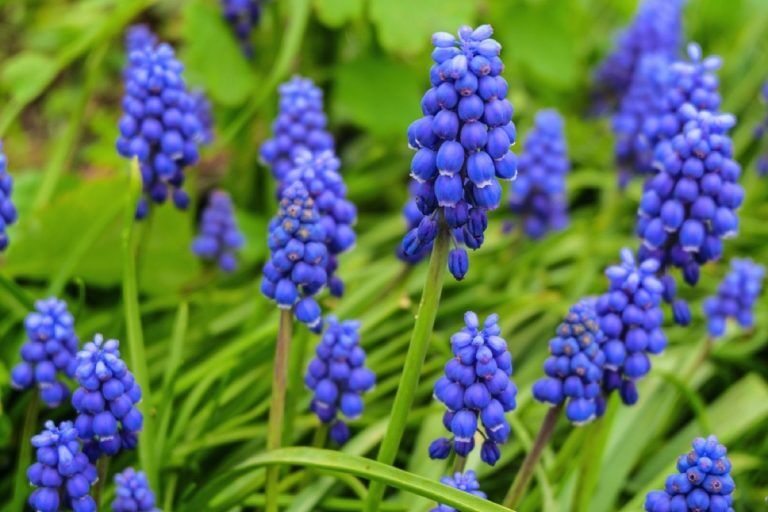Timing Is Everything: A Comprehensive Guide To Planting Hyacinth Bulbs

Table of Contents
Understanding Hyacinth Bulb Planting Seasons
The key to successful hyacinth blooming lies in understanding the importance of fall planting. Hyacinth bulbs need time to establish a strong root system before winter's dormancy. This allows them to store energy and resources for the spring's spectacular bloom.
- Ideal planting time: Generally, the ideal time to plant hyacinth bulbs is 6-8 weeks before the first expected frost in your area. This ensures they have enough time to root before the ground freezes. Checking your local weather forecast for average first frost dates is a great starting point.
- Regional variations: The exact planting window for hyacinth bulbs varies depending on your location. Gardeners in warmer climates can plant slightly later than those in colder regions. Always check your local frost dates to determine the best planting time for your specific area. This ensures your hyacinth bulb planting timing is perfect.
- Benefits of fall planting: Planting in the fall allows the bulbs to develop a robust root system during the cooler months. This is vital for successful hyacinth blooming in the spring. Strong roots ensure the bulb receives adequate nutrients and moisture.
- Early planting risks: Planting too early can lead to premature growth, making the tender shoots vulnerable to frost damage. Late planting, on the other hand, might not give the bulbs enough time to establish themselves before winter.
Choosing the Right Hyacinth Bulbs for Planting
Selecting high-quality hyacinth bulbs is essential for maximizing your chances of successful blooming. Here's what to look for when choosing your hyacinth bulbs for planting:
- Selecting firm, plump bulbs: Avoid bulbs that are soft, shriveled, or show any signs of damage. Firmness indicates a healthy bulb with the potential for robust growth.
- Checking for damage: Carefully inspect each bulb for any signs of disease, mold, or physical damage. Discard any bulbs that look unhealthy or damaged, to prevent the spread of disease and to ensure successful hyacinth blooming.
- Choosing bulb size: Larger bulbs generally produce larger and more impressive blooms than smaller bulbs. Although smaller bulbs will still flower, larger ones tend to offer a more spectacular display.
- Where to buy hyacinth bulbs: Purchase your hyacinth bulbs from reputable garden centers or online retailers that specialize in high-quality bulbs.
Preparing Your Planting Site for Hyacinth Bulbs
Proper soil preparation is crucial for healthy hyacinth growth. Here's how to prepare your planting site for optimal results:
- Well-draining soil: Hyacinth bulbs are susceptible to rot in waterlogged soil. Ensure your soil drains well. If you have heavy clay soil, amend it with compost or other organic matter to improve drainage.
- Sunlight: Hyacinths thrive in locations that receive at least 6 hours of direct sunlight per day. Choose a sunny spot in your garden for optimal blooming.
- Soil pH: Hyacinths prefer slightly acidic to neutral soil with a pH range of 6.0-7.0. You can test your soil's pH using a home testing kit and adjust it accordingly.
- Soil preparation: Loosen the soil to a depth of about 6-8 inches before planting. This allows the roots to penetrate easily and access essential nutrients.
Step-by-Step Guide to Planting Hyacinth Bulbs
Now for the hands-on part! Here's a step-by-step guide to planting hyacinth bulbs:
- Digging planting holes: Dig holes 6-8 inches deep and twice as wide as the bulb. This provides ample space for root development.
- Planting depth: Place the bulb pointed end up, with the top of the bulb just below the soil surface. Don't bury it too deep!
- Spacing: Allow 3-4 inches of space between bulbs to prevent overcrowding and ensure each bulb has enough room to grow.
- After planting: Water thoroughly after planting. Adding a layer of mulch (2-3 inches) will help insulate the bulbs during winter and retain moisture.
- Forcing hyacinths indoors: If you want to enjoy hyacinth blooms indoors, you can force them to bloom earlier. This involves planting bulbs in pots several weeks before your desired bloom time. Follow specific instructions for indoor hyacinth forcing.
Post-Planting Care for Hyacinth Bulbs
Once planted, your hyacinth bulbs require minimal but essential care throughout the winter months:
- Watering: Water regularly during dry periods, especially during the fall and early winter. However, avoid overwatering, as this can lead to root rot.
- Winter protection: A layer of mulch provides insulation and protects the bulbs from harsh winter weather, including frost and extreme temperature fluctuations.
- Pest and disease control: Regularly monitor your hyacinth bulbs for signs of pests or diseases. Take appropriate action if needed, using organic or chemical treatments as necessary.
Conclusion: Reap the Rewards of Perfect Hyacinth Bulb Planting Timing
Mastering the art of hyacinth bulb planting means understanding that timing is everything. By following this guide and planting your hyacinth bulbs at the optimal time, you'll be rewarded with breathtaking spring blooms. Remember to choose healthy bulbs, prepare your soil correctly, and provide proper post-planting care. Don't delay – get started on planting your hyacinth bulbs today and enjoy the stunning results next spring! Happy gardening!

Featured Posts
-
 A Critical Look At The Pokemon Tcg Pocket Celestial Guardians Set Which Card Lags Behind
May 29, 2025
A Critical Look At The Pokemon Tcg Pocket Celestial Guardians Set Which Card Lags Behind
May 29, 2025 -
 Tres Preguntas Y Respuestas Sobre El Real Madrid 3 2 Celta Vigo
May 29, 2025
Tres Preguntas Y Respuestas Sobre El Real Madrid 3 2 Celta Vigo
May 29, 2025 -
 15 000 Fellowship Rescinded State Library Of Queensland And First Nations Author Dispute
May 29, 2025
15 000 Fellowship Rescinded State Library Of Queensland And First Nations Author Dispute
May 29, 2025 -
 La Vaccinazione Covid 19 Protegge Dal Long Covid I Dati Ecdc
May 29, 2025
La Vaccinazione Covid 19 Protegge Dal Long Covid I Dati Ecdc
May 29, 2025 -
 Advocacy Group Warns Of Australian Music Industry Crisis Targets Key Electorates
May 29, 2025
Advocacy Group Warns Of Australian Music Industry Crisis Targets Key Electorates
May 29, 2025
